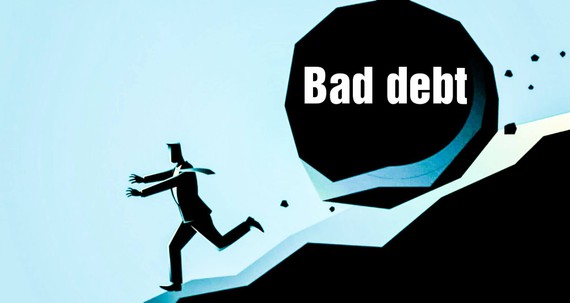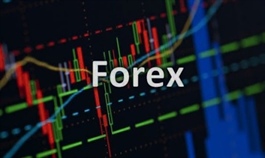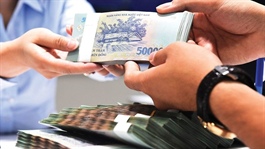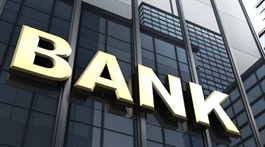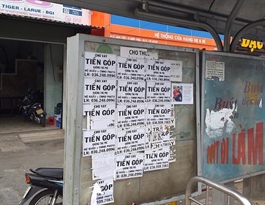Decline in reserve buffer to affect bad debts
Decline in reserve buffer to affect bad debts
Business results of commercial banks in the last nine months show a high potential risk in increasing bad debts ratio, which eventually will result in huge loan loss reserves (LLR).
Illustrative photo.
|
This looming risk will lower the reserve buffer to deal with bad debts in coming time and also affect bank profits and the benefits of shareholders in the future.
Increase in risk provisions
Many experts believe that the bad debt ratio in each particular bank and the whole banking system in general may fluctuate from time to time. However, bad debt ratio within the entire banking system is still stable, as banks have kept the Non-Performing Loan (NPL) ratio below 2%, which is acceptable. Therefore, even if bad debts rise in one bank and decrease in another, on an overall basis the NPL ratio will not be a problem. On the other hand, looking at the current scenario, any increase in bad debts will not bring stability.
As Saigon Investment has analyzed in previous articles, the NPL ratio in Commercial Banks is increasing rapidly, which is evident in the financial statements of the third quarter of 2020. Bad debts are forecast for restructuring to support customers affected by the Covid-19 pandemic. Aggregate data from Q3 consolidated financial statements of 27 Commercial Banks show that the total on-balance-sheet bad debt at the end of September had reached around VND 111,000 bn, an increase of 29.5% compared to the beginning of the year. In this, four banks recorded a decrease in bad debt, namely, Techcombank, SeABank, NCB and PGBank. The remaining 23 banks having increasing bad debt. In particular, in seven banks the on-balance-sheet bad debt increased by almost 50%, led by VietinBank with 66% increase in bad debt balance, and TPBank with 60% increase.
Statistics of the State Bank of Vietnam (SBV) show that as of 9 November, credit institutions restructured the repayment term for 272,183 customers with a loan balance of VND 341,855 bn. Of course, not all loans had rescheduled terms of repayment, keeping the same group of debts as per Circular 01/2020 of the SBV, but the possibility of an increase in bad debt is expected, causing the NPL ratio of the whole banking system to exceed by 3% in the near future.
However, it is clear that commercial banks do not sit still when bad debts are on the rise, as no one has better understanding of current bad debt situation, as well as better able to forecast bad debt parameters in coming time. Nonetheless, there are not many solutions for handling bad debts. From the beginning of the year until now, banks have in turn bought back debts from the Asset Management Company of Vietnam Credit Institutions (VAMC) due to the fact that VAMC could not handle them. As the sale of debts to VAMC in the past were actually just a way to pawn off debts by sending the debt for VAMC for keeping. This activity does not make much sense as banks still have to set up full risk provisions for such debts. Therefore, debt settlement methods for VAMC are quite fuzzy.
Faced with the risk of bad debts re-emerging, banks come back with increase in risk provisions. For example, in the third quarter, Vietcombank provision expense increased by about 34.7% to VND 2,025 bn, as compared over the same period in 2019, and accumulated nine-month risk reserve of the bank reached about VND 6,033 bn, compared to the same period in 2019 when it was VND 4,819 bn. The provision for risk at other banks was similar, which all increased, such as in VietinBank by 39%, VPBank by 14.4%, ACB by nearly five times from VND 145 bn to VND 703 bn, Nam A Bank increased by 7.8 times, and Techcombank increased from VND 605 bn to VND 2,200 bn.
Decline in reserve buffer
Currently the bad debt buffer is lessening, so the parameters used to evaluate bank defense capabilities against risks related to bad debts are running short of breath compared to NPL increase rate at the end of the third quarter. Only a few banks have increased their LLR rate such as Vietcombank to about 215%, Techcombank to 147%, MB to 119%, and BacABank to 124%.
Besides, there are banks with less than 100% LLR such as TPBank with 92%, BIDV with 87%, while fifteen banks recorded a decline in LLR. At ACB, the LLR rate fell from 174% at the beginning of the year to 117% at the end of the third quarter. VietinBank also fell from 120% to 84.25%. Some banks have quite thin LLR rates such as VPBank with only 49%, VIB with 48%, and KienlongBank with only 17%. Thus, if last year banks were confident that the LLR ratio was still strong enough to deal with bad debt increase, now they have to speed up the risk provisions as the forecast for bad debts is not very bright.
Normally, the last two quarters of the year are time when banks increase risk provisions sharply to increase the buffer to handle bad debts. This has cost a lot of money for banks in the fourth quarter, which may even move until next year, to ensure a buffer against existing bad debts and other possible rising costs. Although now the increase in costs in commercial banks for credit risk provision is very good, ensuring safety for the system. However, this will be bad news for bank shareholders, as even though the risk provision is a saving, bank profits will be eroded, and some banks have even experienced a decrease in profits because they have had to make a strong provision in the last nine months.
Many banks are currently listed, therefore, a drop in profit will affect stock value, and the dividend payout rate next year may be low, or even no dividend at all.


